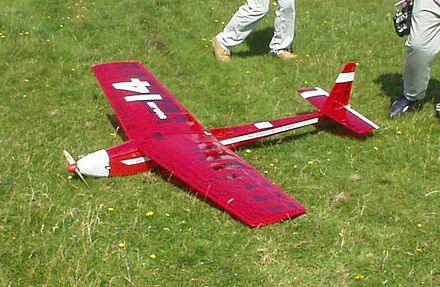bertha_benz
New Member
- Joined
- Nov 18, 2016
- Messages
- 1
- Reaction score
- 1
This model airplane made the first transatlantic crossing (3028 km) with its engine runtime of 38h 52 min 19 sec th_confused0052

https://en.wikipedia.org/wiki/The_Spirit_of_Butts'_Farm
Some stats from the wikipedia page;
- FS-61 0.61 cubic inch (10cc) four-stroke
- CH Ignition CDI spark ignition system
- Smaller valves in engine
- Custom carburetor mounted remotely
- Triple fuel filtration down to 1 micron
- Pressurized fuel tank using crankcase pressure
- "PET" O.S. 0.10 two-stroke engine
- Razor sharp wood propellor 14x12 @ ~3900 RPM
- Indopol L-50 lubricant additive (470 ml) per (3,785 ml) of Coleman lantern fuel
So basically we roughly have the 0.2 bhp output of a 10cc O.S four stroke
Burning fuel at a rate of
2.2oz/hr = 62.36gram/hour (Coleman gasoline fuel / lubricant blend)
Which comes down to roughly;
Every minute => 1ml of blended fuel rotated the prop around 3900 times.
3.9k full combustion cycles per 1ml of blended fuel intuitively feels crazy
Is my math wrong or my intuition?
Seems like there is some synergy going on where the improvement of the individual factors amplifying each other basically.
Is it even possible to break this world record? How would you do it?
Anyone on this corner of the web ever got anywhere near?
Could some ingenuity/innovation in this area from communities like this one eventually "trickle up" towards more fuel efficient lawnmowers, motorcycles etc?
Any thoughts & ideas related to the subject are appreciated!

https://en.wikipedia.org/wiki/The_Spirit_of_Butts'_Farm
Some stats from the wikipedia page;
- FS-61 0.61 cubic inch (10cc) four-stroke
- CH Ignition CDI spark ignition system
- Smaller valves in engine
- Custom carburetor mounted remotely
- Triple fuel filtration down to 1 micron
- Pressurized fuel tank using crankcase pressure
- "PET" O.S. 0.10 two-stroke engine
- Razor sharp wood propellor 14x12 @ ~3900 RPM
- Indopol L-50 lubricant additive (470 ml) per (3,785 ml) of Coleman lantern fuel
So basically we roughly have the 0.2 bhp output of a 10cc O.S four stroke
Burning fuel at a rate of
2.2oz/hr = 62.36gram/hour (Coleman gasoline fuel / lubricant blend)
Which comes down to roughly;
Every minute => 1ml of blended fuel rotated the prop around 3900 times.
3.9k full combustion cycles per 1ml of blended fuel intuitively feels crazy
Is my math wrong or my intuition?
Seems like there is some synergy going on where the improvement of the individual factors amplifying each other basically.
Is it even possible to break this world record? How would you do it?
Anyone on this corner of the web ever got anywhere near?
Could some ingenuity/innovation in this area from communities like this one eventually "trickle up" towards more fuel efficient lawnmowers, motorcycles etc?
Any thoughts & ideas related to the subject are appreciated!

































































